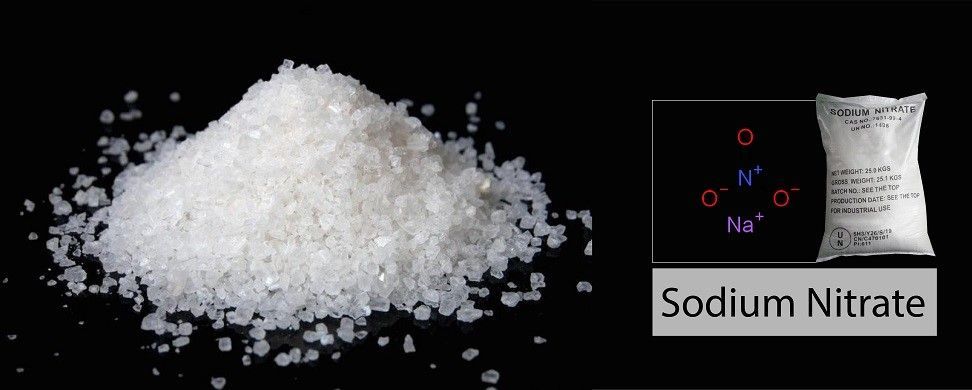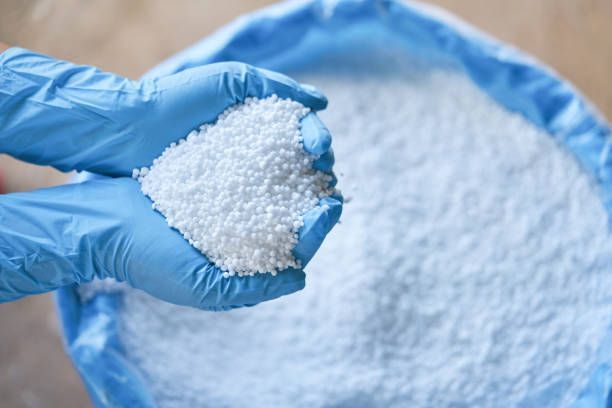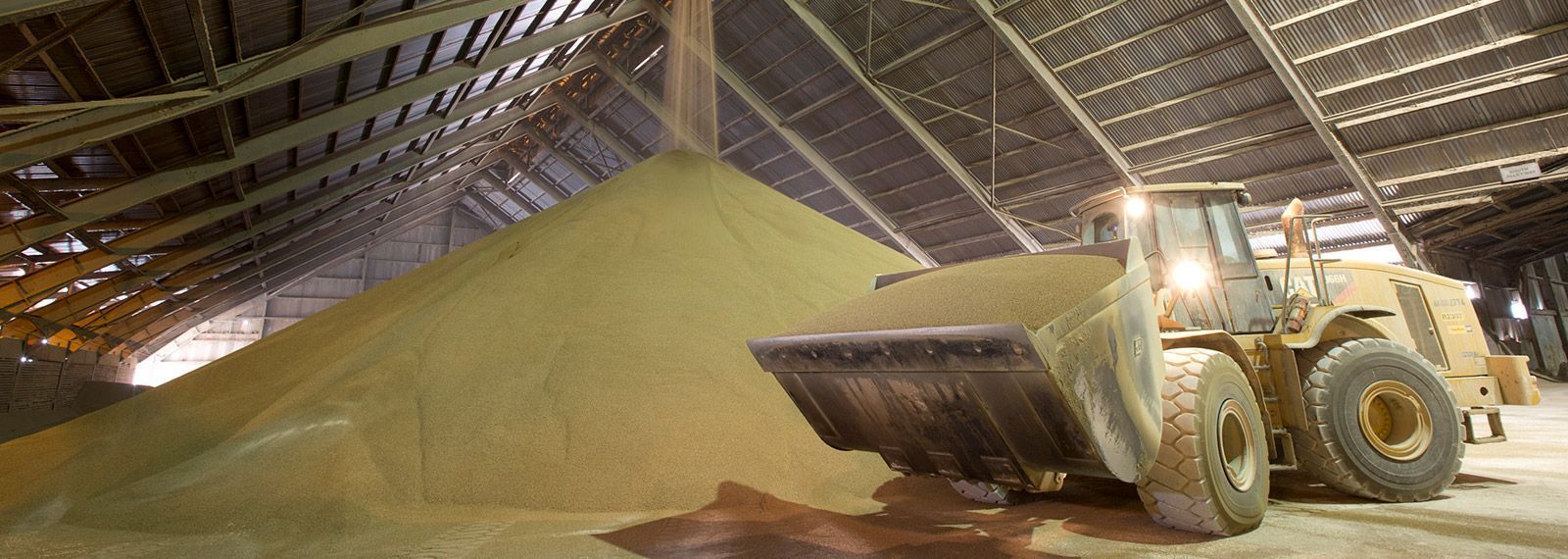Industrial Uses of Sodium Nitrate: From Glass Production to Explosives
Sodium nitrate (NaNO₃) is a naturally occurring compound known for its excellent oxidizing properties and high solubility in water. Often appearing as a white crystalline solid, this versatile chemical plays a vital role in a variety of industrial sectors. Historically sourced from natural mineral deposits, today - sodium nitrate is also produced synthetically to meet global demand.
Its significance lies in its ability to act as a stabilizer, oxidizer and fluxing agent, making it invaluable across a wide spectrum of industries. From enhancing the clarity and durability of glass to preserving heat in thermal energy systems, and even as a key ingredient in propellants and explosives, sodium nitrate continues to prove its industrial worth.
In this article, we’ll explore the diverse industrial applications of sodium nitrate - covering its role in glass manufacturing, metallurgy, fertilizers, pyrotechnics and explosives - while shedding light on why this compound remains essential in modern production processes.
What is Sodium Nitrate?
Sodium nitrate (NaNO₃) is an inorganic compound belonging to the family of nitrate salts. Composed of sodium (Na⁺) and nitrate (NO₃⁻) ions, it forms a stable, highly soluble salt widely used in both natural and industrial contexts. As a member of common sodium compounds, sodium nitrate is prized for its strong oxidizing capabilities and chemical stability.
Naturally, sodium nitrate is found in large deposits, especially in arid regions such as Chile’s Atacama Desert, where it has historically been mined as Chile saltpeter. Today, it is also synthesized industrially by neutralizing nitric acid with sodium carbonate or sodium hydroxide, ensuring a steady and scalable supply.
Physically, sodium nitrate appears as a colorless or white crystalline solid. It is highly soluble in water and exhibits hygroscopic properties, meaning it can absorb moisture from the air. With a melting point of around 308°C and decomposing at higher temperatures, NaNO₃ properties make it suitable for high-temperature and oxidizing environments.
These characteristics - chemical simplicity, solubility and reactivity - form the foundation of sodium nitrate’s extensive industrial applications, from serving as a flux in metallurgy to acting as a thermal storage medium and a core component in explosives.
Glass Production Applications
Sodium nitrate plays a crucial role as a glass refining agent in the manufacturing of various glass types, including optical glass and container glass. Its function in the glass batch composition is primarily as an oxidizing agent in glass, helping to remove unwanted colorants and gaseous inclusions that can compromise clarity and structural integrity.
During production, sodium nitrate is introduced into the glass batch formulation - a carefully measured mix of silica sand, soda ash, limestone and other additives. Once the batch is heated to high temperatures, sodium nitrate helps oxidize ferrous iron (Fe²⁺) to ferric iron (Fe³⁺), significantly reducing greenish hues and improving the optical properties of the final product. This refining action minimizes bubbles and impurities, resulting in clearer, higher-quality glass.
In container glass, sodium nitrate enhances chemical durability and helps control the melting rate, improving process efficiency and end-product strength. Its compatibility with high-temperature environments and its ability to release oxygen during decomposition make it invaluable for consistent and high-purity output in glass production.
Use in Specialty Glass and Fiber Glass
In specialty glass and fiberglass manufacturing, sodium nitrate offers added advantages. It supports the creation of ultra-clear, low-iron glass used in solar panels and high-end optics. In fiber glass, it improves melt homogenization, fiber formation, and temperature stability, ensuring stronger, more uniform fibers. Its oxidizing action also reduces defects, making it essential for precision glass applications.
Use in Explosives Manufacturing
Sodium nitrate is a key component in the production of industrial explosives, valued for its powerful oxidizing properties. As one of the most effective oxidizer chemicals, it supplies oxygen to fuel components in explosive mixtures, enabling rapid combustion and energy release. This role makes sodium nitrate vital in both civil and military applications, particularly in mining, quarrying and construction.
Historically, sodium nitrate was one of the main ingredients in black powder - a blend of charcoal, sulfur and nitrate that served as an early form of explosive. Its use evolved with the development of more advanced formulations like dynamite and other nitrate explosives, where it continued to serve as a primary oxidizing agent. In modern blasting agents, sodium nitrate is often mixed with fuels like diesel to produce powerful yet stable explosives.
When comparing sodium nitrate vs. ammonium nitrate, both serve similar purposes, but with distinct advantages. Ammonium nitrate is generally more energetic and cost-effective, making it the dominant choice in today’s large-scale blasting operations. However, sodium nitrate remains preferred in certain applications due to its stability, reduced moisture sensitivity and consistent performance in extreme environments.
Its availability, long shelf life and reliable oxidizing characteristics ensure that sodium nitrate continues to play a critical role in the formulation of various commercial explosives.
Safety and Handling Considerations
Though not highly sensitive on its own, sodium nitrate poses a
fire risk when exposed to combustible materials due to its oxidizing nature. Strict
safety protocols are essential during storage and handling, including keeping it away from heat sources, fuels and flammable substances. Regulatory compliance with local and international guidelines is also crucial, especially in transportation and bulk storage. Personal protective equipment (PPE) and proper ventilation help ensure safe, responsible use.

Role in Fertilizers
Sodium nitrate is widely used as a nitrate fertilizer, providing plants with readily available nitrogen - an essential nutrient for vegetative growth and chlorophyll production. As an agricultural sodium nitrate product, it delivers nitrogen in a fast-acting, water-soluble form that plants can absorb immediately, promoting rapid development and increased crop yields.
One of the key benefits of sodium nitrate is its dual role: not only does it supply nitrogen, but the sodium content can also influence soil nitrate content and cation balance in certain soil types. While excessive sodium may lead to soil salinity issues in sensitive environments, controlled application helps in reclaiming acidic soils and improving nutrient uptake efficiency in some cases.
Compared to other nitrates like ammonium nitrate or calcium nitrate, sodium nitrate stands out for its neutral pH effect and lack of acidifying properties. Ammonium nitrate releases nitrogen in both nitrate and ammonium forms but can lower soil pH over time, requiring lime amendments. Calcium nitrate, on the other hand, adds calcium - a beneficial nutrient - but may be more expensive and less available in certain markets.
Sodium nitrate’s high solubility and immediate availability make it ideal for top-dressing, fertigation and use in dry blends. Its value is especially recognized in specialty crops, such as tobacco, sugar beets and leafy greens, where quick nitrogen uptake is crucial.
As a reliable source of nitrogen, sodium nitrate remains a valuable option in modern agriculture when applied with proper soil management practices.
Metal Treatment and Heat Processing
Sodium nitrate plays an important role in metal treatment and industrial metal finishing, particularly in high-temperature processes like annealing and tempering. These treatments are essential for altering the mechanical properties of metals - such as hardness, ductility and strength - by controlling cooling rates and internal stress.
In these applications, sodium nitrate is used as part of heat-treating salts, often blended with other metal nitrates like potassium nitrate. These salt mixtures form a stable, molten bath in which metal components are submerged. The consistent temperature and even heat distribution in these baths help ensure uniform treatment results, especially for complex or high-alloy steel parts.
Beyond its thermal role, sodium nitrate also contributes to rust prevention and surface cleaning. When applied in controlled conditions, it aids in removing scale and oxidation from metal surfaces, preparing them for further processing such as plating, coating or welding. The oxidizing nature of sodium nitrate helps maintain clean and reactive surfaces, enhancing adhesion and corrosion resistance.
Due to its high thermal stability and oxidizing properties, sodium nitrate remains a trusted component in metal heat processing, supporting industries such as automotive, aerospace, tool manufacturing and heavy machinery production.
Food Industry and Preservatives
Food-grade sodium nitrate has a long history as a curing agent, particularly in the preservation of meats like ham, bacon and salami. It works by inhibiting the growth of harmful bacteria such as Clostridium botulinum, while also contributing to the characteristic flavor, texture and pink color of cured meats. As a nitrate preservative, it has been essential in extending shelf life and ensuring food safety.
In modern food production, sodium nitrate is typically converted to sodium nitrite during the curing process, which is the more active preservative. However, due to growing health concerns over potential links between nitrites and nitrosamines (compounds formed during high-temperature cooking), the use of nitrates is now strictly regulated.
Regulatory bodies set maximum allowable limits, and labeling is required to inform consumers. While sodium nitrite is more commonly used today, sodium nitrate remains approved for specific traditional products and slow-curing methods, maintaining its niche in food preservation.

Environmental Impact and Sustainability
While sodium nitrate serves many valuable industrial purposes, its overuse can lead to significant environmental consequences. Excessive application, particularly in agriculture, can contribute to nitrate pollution, where unused nitrates leach into the soil and contaminate groundwater and surface water sources.
One of the major environmental nitrate effects is the promotion of eutrophication - an overgrowth of algae in aquatic systems caused by elevated nutrient levels. This can lead to oxygen depletion, fish die-offs, and disruption of aquatic ecosystems. High nitrate levels in drinking water also pose health risks, especially for infants, potentially causing conditions such as methemoglobinemia or “blue baby syndrome.”
Industries handling sodium nitrate must adhere to strict regulations regarding nitrate disposal. Best practices include controlled application, runoff prevention measures and proper treatment of wastewater before discharge. Additionally, safer alternatives and more sustainable nitrate management strategies are being developed, such as precision agriculture technologies and the use of controlled-release fertilizers.
Sustainability in sodium nitrate use involves balancing industrial and agricultural benefits with environmental stewardship. Through responsible handling, innovation and adherence to environmental regulations, the negative impact of sodium nitrate on ecosystems can be significantly reduced - ensuring its continued use without compromising ecological health.
Emerging and Niche Industrial Applications
Beyond its traditional uses, sodium nitrate is gaining attention in emerging industrial applications, particularly in the field of renewable energy. One of the most promising developments is its role in molten salt storage systems for concentrated solar power plants. In these setups, sodium nitrate solar mixtures - often combined with potassium nitrate - store thermal energy efficiently, allowing electricity generation even after sunset.
In pyrotechnics, sodium nitrate serves as a key oxidizer, enabling colorful displays and controlled combustion in fireworks and signal flares. Its stability and high oxygen content make it a reliable component in various pyrotechnic formulations.
Additionally, sodium nitrate is used in nitrate in lab settings for chemical synthesis, analytical testing, and reagent preparation. Its predictable behavior and solubility make it suitable for a range of laboratory and scientific applications, from titration standards to oxidizing reactions.
These niche applications highlight sodium nitrate’s versatility and expanding relevance in high-tech and specialized industries.
FAQs About Sodium Nitrate in Industry
What industries use sodium nitrate the most?
Sodium nitrate is widely used in the glass industry, fertilizers, explosives manufacturing, metal treatment and increasingly in renewable energy systems. Its versatility makes it essential across both traditional and emerging sectors.
Is sodium nitrate explosive by itself?
No, sodium nitrate is not explosive on its own. However, as a strong oxidizing agent, it can accelerate combustion when in contact with flammable materials. Proper storage and handling are crucial to prevent fire hazards.
How is sodium nitrate different from ammonium nitrate?
While both are nitrate-based oxidizers, ammonium nitrate is generally more energetic and widely used in blasting agents. Sodium nitrate is more stable, less moisture-sensitive and preferred in specific applications like glass production and certain fertilizers.
Can sodium nitrate be used in green energy systems?
Yes. Sodium nitrate is a key component in molten salt storage for solar power plants, where it stores thermal energy efficiently, enabling power generation even after sunset.
Are there health risks in handling sodium nitrate?
Yes. Although not highly toxic, sodium nitrate can irritate the skin, eyes and respiratory system. Safe handling practices, including the use of personal protective equipment (PPE), and adherence to regulatory guidelines are essential.
Conclusion
From glass production and explosives to fertilizers and green energy systems, sodium nitrate remains a versatile and valuable compound across numerous industrial sectors. Its unique chemical properties continue to support critical processes in both traditional and emerging applications. As industries evolve, the need for safe, efficient, and environmentally responsible use of chemicals like sodium nitrate becomes more important than ever.
DECACHEM is committed to supplying high-quality sodium nitrate and other essential chemicals while promoting sustainable practices. Industry professionals are encouraged to explore innovative, responsible ways to incorporate sodium nitrate into their operations for long-term performance and environmental compliance.
















